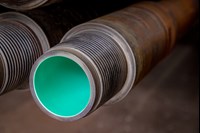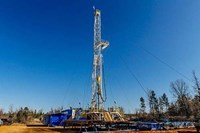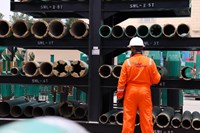Drilling
Article
November 2025
As LNG export capacity surges and AI-driven power demand skyrockets, U.S. natural gas is poised for its biggest growth cycle yet. In this month’s Drilling Advances, columnist Ford Brett breaks down why “trash gas” may soon turn to gold—and what a 25% jump in gas production by 2030 means for rigs, crews and drilling technology.

News
December 03, 2025
Black Stone Minerals and Caturus Energy have entered a 220,000-acre Haynesville development agreement, establishing a multi-year drilling program to expand Gulf Coast natural gas output.

News
December 03, 2025
ReconAfrica has encountered 64 m of hydrocarbon pay at its Kavango West 1X well in Namibia’s onshore PEL 73. The company will conduct a production test in early 2026 to evaluate flow potential and advance the emerging Damara Fold Belt play.
News
December 01, 2025
Perenco has completed a 12-well drilling campaign at Chad’s Badila field, adding horizontal, appraisal and water-disposal wells and boosting combined Badila–Mangara production to over 18,000 bopd. The rig has now moved to the Doba Basin for the next phase of development.

News
November 28, 2025
Ecopetrol has approved a 2026 investment plan of $5.4–$6.6 billion, keeping spending steady as the company targets 730,000–740,000 boed next year. The plan prioritizes upstream activity, refinery reliability and gas development, while allocating 30% to energy-transition, transmission and infrastructure projects under a conservative $60 Brent outlook.
News
November 27, 2025
Petralon Energy is accelerating drilling at Nigeria’s Dawes Island field, bringing DI-2 online and spudding DI-3 under the PIA’s “Drill or Drop” mandate. Backed by strong government endorsement, the project highlights the growing role of indigenous operators in boosting national production and advancing Nigeria’s upstream goals.

News
November 24, 2025
Condor Energies has reached TD on its first horizontal well in Uzbekistan’s Andakli field while two new Jurassic clastics workovers lifted production to nearly 12,000 boed. Early results point to a scalable new gas play as the company prepares for an expanded drilling program in 2026.

News
November 21, 2025
D-Tech has fully commercialized its OmniSteer rotary steerable platform after exceeding one million feet drilled across global basins. The latest generation RSS integrates upgraded digital controls, automated steering algorithms, and a streamlined mechanical design.

News
November 14, 2025
The Trump administration has finalized its rollback of drilling restrictions across the 23 million-acre National Petroleum Reserve–Alaska, reopening vast Arctic areas with an estimated 8.7 billion barrels of resources.

News
November 11, 2025
VAALCO Energy is advancing major operational projects across Africa, including a late-2025 drilling campaign in Gabon, the Baobab FPSO refurbishment in Côte d’Ivoire, and new well completions in Egypt. The company also continues progress on the Venus development offshore Equatorial Guinea.

Article
Sponsored Content
October 2025
Weatherford’s Directional Drilling strategy is built on a foundation of customer partnership and operational excellence. By focusing on resilient markets and high-temperature environments, we ensure our technology portfolio directly addresses the evolving needs of operators. Our commitment to digital transformation and customer-driven innovation enables us to deliver solutions that consistently add value and improve outcomes in complex drilling scenarios.

News
November 03, 2025
Liberty Petroleum plans to begin drilling in 2026 across its 20-million-acre position in Australia’s Officer basin—one of the country’s largest untapped oil prospects. The U.S.-based firm’s project underscores deepening U.S.–Australia energy cooperation.

Article
October 2025
NOV’s low thermal conductivity internal pipe coating and two-stage mud chiller extend BHA service life and reduce NPT.

News
October 31, 2025
Buccaneer Energy has selected a drilling rig for the Allar #1 development well in the Pine Mills Field, Texas, with drilling set to begin in late October. The company plans to produce oil at up to 124 bopd and use associated gas from the Fouke area to power a future Bitcoin mining operation.
News
October 30, 2025
Sunda Energy is advancing preparations for the Chuditch-2 appraisal well offshore Timor-Leste, targeting drilling in early 2026, while expanding its Southeast Asian upstream portfolio with two new offshore licenses in the Philippines.

News
October 28, 2025
ADNOC Drilling reported record financial performance for the third quarter and first nine months of 2025, underscoring its role as ADNOC’s upstream growth engine and a key contributor to Abu Dhabi’s long-term energy strategy.

News
October 28, 2025
Odfjell Technology has been awarded a five-year contract to deliver fishing services for drilling and workover operations with a major oil and gas company in Kuwait, marking a continued expansion of its well services portfolio in the Middle East.

Article
October 2025
This advancement ushers in a new era in drilling performance and flexibility.

Article
October 2025
This article explores how innovative drilling waste management is reshaping offshore sustainability. By treating waste onsite and leveraging technologies like TWMA’s electric, automated RX series, operators can significantly reduce emissions, enhance safety, recover valuable materials, and align offshore operations with global net-zero ambitions.

News
October 24, 2025
Baker Hughes has won a multi-year contract from Aramco to expand coiled tubing drilling operations across Saudi Arabia’s gas fields, increasing its fleet from four to ten units. The project will enhance gas recovery and support the Kingdom’s drive to accelerate natural gas production.

News
October 23, 2025
The Trump administration has reopened Alaska’s Arctic National Wildlife Refuge for oil and gas leasing, reversing a Biden-era ban and paving the way for a winter lease sale. Interior Secretary Doug Burgum said the move will expand U.S. fossil fuel production across 1.56 million acres of the Arctic coastal plain.


